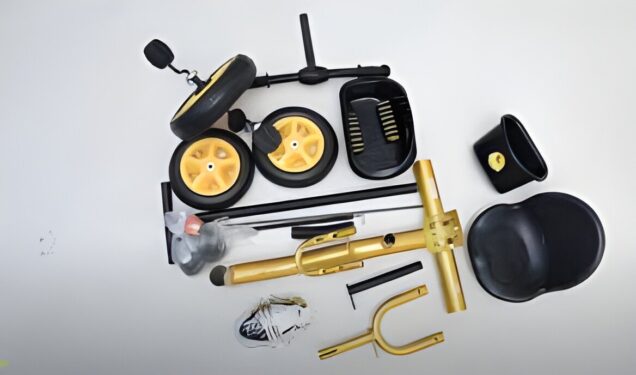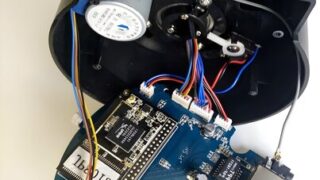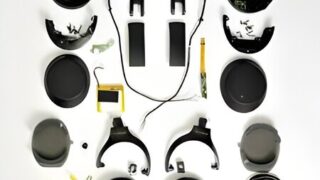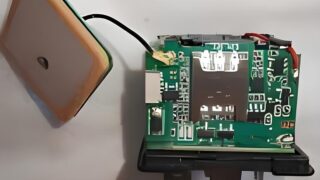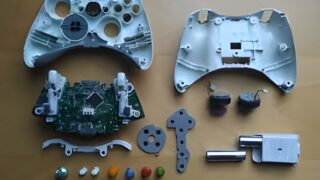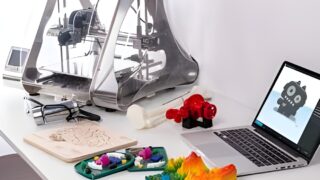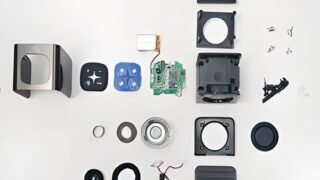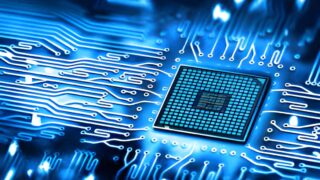Children often love to play with bikes and tricycles, which are designed to look like actual bicycles and tricycles in miniature form. These playthings come in various styles and colors to cater to different preferences.
Tricycles that are designed for young children who are still learning to balance and pedal, usually have three wheels, which makes them more stable than traditional bicycles. Some tricycles have adjustable seats and handlebars to accommodate the growing child. Bikes are typically designed for children who have already mastered the skills of balancing and pedaling, and are often geared towards slightly older kids. These bikes come in a range of styles, such as road bikes, mountain bikes, and BMX bikes, and they often feature adjustable seats and handlebars to accommodate growing children.
Beyond playtime enjoyment, tricycles and bikes are valuable assets in helping children improve their gross motor skills, hand-eye coordination, and balance, while also encouraging them to get outside and explore.
Tricycles and bikes are manufactured in many countries around the world, but some of the major producers include China, Taiwan, Vietnam, and India. China dominates the export of tricycles and bikes, which are in high demand in several countries, including the United States, Germany, the United Kingdom, France, and Japan, due to their large toy markets and a strong preference for high-quality products.
Tricycle and Bike Product Inspection Service for Components
The Bill of Materials (BOM) is a comprehensive list of all the components required to manufacture a toy tricycle or bike. The BOM is essential for quality assurance because it ensures the use of approved components, identifies critical components, manages inventory, facilitates traceability, and supports design changes.
Tricycles and bikes are typically made up of the following components:
- Frame
- Wheels
- Tires
- Handlebars
- Pedals
- Seat
- Chain
- Brakes
- Electrical accessories such as Battery, Motor, Controller, and Wiring etc,. (Used in certain types of models)
Common defects found in the sub-parts of tricycles or bikes can include:
- Frame defects, including cracks, welding problems, misalignment, warping, and poor quality materials. These defects can occur due to poor manufacturing, handling during transportation, exposure to extreme conditions, or the use of low-quality materials. Such defects can make the cycle difficult or unsafe to ride and can result in injury to the rider.
- Common wheel defects include misaligned or wobbly wheels, bent wheels, loose or damaged spokes, poorly installed bearings, flat or punctured tires, and poor quality tires. These defects can result in an unstable or uneven ride, difficulty manoeuvring the cycle, or compromised stability.
- They may have common tire defects such as punctures, blowouts, sidewall damage, uneven wear, and tread separation. These defects can result in reduced traction, instability, and even tire failure during use.
- Several handlebar defects that can compromise the rider’s safety and comfort. These include loose or misaligned handlebars, damaged grips, improperly installed brake levers, inadequate padding, and bent handlebars.
- Pedal defects commonly found in tricycles or bikes include loose or unstable pedals, bent or damaged pedals, pedal axle defects, poor-quality materials, misaligned pedals, stiff or unresponsive pedals, and pedals that are too small or too large. These defects can cause difficulty pedalling, reduced functionality, discomfort or pain for the rider, and even safety hazards such as falling or foot injuries.
- Common brake defects include worn or damaged brake pads, misaligned brakes, loose or missing brake components, sticking brakes, improperly installed brakes, rust or corrosion, and damaged brake cables. These defects can result in reduced braking power, longer stopping distances, or even brake failure, which can be dangerous.
- Tricycles or bikes may have common chain defects such as chain breakage, slippage, stiffness, skipping, rust, or incorrect tension. These issues can cause the toy to stop moving, lose power, move sluggishly, jerk or skip, and potentially cause damage to other components.
- Tricycles or bikes with electrical components can have common defects such as malfunctioning lights, non-functioning sound effects, electrical shorts, battery defects, overheating components, and loose connections. These defects can result in safety hazards, including fire hazards.
- Common defects in the seat of tricycles or bikes include tears or rips, loose or broken fasteners, poor cushioning, misalignment, incorrect sizing, and poor quality materials. These defects can cause discomfort, pain, or even unsafe conditions for the rider, and can also lead to damage to the seat over time.
As a quality control company, we focus on several aspects of the Bill of Materials (BOM) for tricycles and bikes to ensure high-quality products. This includes checking component selection and ensuring they meet safety standards, verifying accuracy of quantity and specifications, identifying critical components, ensuring traceability of all components, checking compatibility and ensuring the BOM is updated for any design changes. By focusing on these aspects, we can help ensure our client produces safe and high-quality products.
To ensure the production of high-quality tricycles and bikes in China or any other region in Asia, it is advisable to implement quality control and inspection measures for sub parts during the manufacturing process.
Quality inspection involves dispatching experienced inspectors to the manufacturing facility to ensure that the right components and materials are being used in tricycle and bike production. It helps ensure that the final product meets the safety and quality requirements.
Tricycle and Bike Product Quality Check Service for Manufacturing
Creating a tricycle and bike involves a multi-stage production process that can vary based on the complexity and type of the cycle being made. Each stage of the process may require different techniques and tools, and involve various teams of professionals to ensure that the final product meets the required quality standards.
During the manufacturing process of tricycles and bikes, sub-parts undergo various quality checks to ensure that they meet the required quality standards. Some common methods used for quality checks during the manufacturing process may include:
For mechanical parts:
- Quality check services for frame should involve visual inspection, dimensional checks, material inspection, weld inspection, load testing, functionality testing, and safety checks.
- Dimensional, material, visual, rolling resistance, and load testing for wheels.
- Checks include material inspection, size and dimension checks, tread inspection, air pressure testing, durability testing, and visual inspection for tires.
- Visual inspection, measurement, load testing, wear and tear testing, and functionality testing for pedals.
- For the chain used in tricycles and bikes may include checking for strength, proper length and tension, lubrication, alignment, corrosion resistance, and safety.
- Brakes used in the manufacturing of tricycle and bike involves inspecting materials, checking dimensions and surfaces, testing functionality and durability, ensuring compatibility.
- Quality checks of handlebars include visual inspection, dimensional check, strength test, alignment check, functionality test, and surface finish check.
- Seats involves inspection and testing.
For electronic parts: (Used in certain types of models)
- Quality check services for batteries used in tricycles and bikes involve testing the battery for capacity, leaks, voltage, connectors, overheating, and charge time.
- Testing of the electrical motor includes visual inspection, electrical, load, temperature, and noise testing.
- A controller’s testing includes visual inspection, functional testing, voltage and current testing, environmental testing, and compliance testing
- Wiring involves visual inspection, continuity test, insulation resistance test, dielectric strength test, voltage drop test, and polarisation test.
The manufacturing processes for each component listed in a product’s bill of materials carry specific quality risks and potential defects.
Our ability to anticipate and control risks, minimise quality problems, and effectively manage the production of tricycles and bikes in Asia is enhanced by utilising our quality inspection services, production monitoring, and factory audit service. This approach leads to successful mass production.
After the sub-suppliers have produced all the necessary parts and sub-parts, the assembler (the factory from which the finished product is purchased) typically proceeds with the subsequent assembly process:
- Obtaining parts produced in-house from the company’s manufacturing division.
- Establishing an incoming quality control procedure to ensure that the parts meet the required quality standards. (or not)
- Accurately assembling the parts to ensure proper function. (or not)
- Tricycles and bikes undergo rigorous testing on a specialised bench, including automated and manual tests performed by human testers.
- Perform a quality audit to confirm the product meets the specified criteria. (or skipped in the case of rush shipments)
- Pack the product securely for shipping.
Processes carry inherent quality risks that must be addressed (especially if human operation is involved since it is not very repeatable).
Our quality inspection agency provides comprehensive solutions to manage the risks associated with the production of tricycles and bikes. We achieve this by implementing quality control checkpoints and providing quality inspectors to monitor various stages of the manufacturing process.
Get help with Tricycle and Bike Manufacturing Quality Control
Tricycle and Bike Quality Control & Typical Defects
There are multiple factors that can lead to quality issues in tricycles and bikes, including the quality of components and materials, the level of workmanship involved in their assembly, and the thoroughness of testing procedures.
Tricycles and bikes may experience several shared defects, such as:
- Worn or Damaged Tires
- Loose or Broken Fasteners
- Brake Failure
- Chain Issues
- Frame Damage
- Misaligned Wheels
- Loose or Damaged Handlebars
- Improper Assembly
- Electrical Issues (Used in certain types of models)
Are there any other defects that you have encountered or believe we should be aware of? If yes, please feel free to share them in the commentary section.
If you need help with resolving quality issues related to tricycles and bikes, and identifying the root cause, please don’t hesitate to contact us using the button below. Our experienced team is available to assist you and provide the support you need.
Tricycle and Bike Quality Control Service, what do we check
Our quality inspectors prioritise certain aspects when performing product inspection and quality control on tricycles and bikes. These aspects include, but are not limited to:
- Materials and Manufacturing: We would inspect the materials used in the manufacturing process, as well as the manufacturing techniques used to produce the components of the tricycle or bike, to ensure that they meet quality standards.
- Assembly and Construction: To ensure that the tricycle or bike is assembled correctly and all components are securely fastened, we would perform an inspection of the construction and assembly.
- Functionality and Performance: It includes the testing of brakes, handlebars, wheels, and overall stability, to ensure that it operates safely and effectively.
- Appearance: Inspecting the tricycle or bike to ensure it is visually appealing and free from any physical damage such as scratches, dents, or other imperfections that could diminish its overall appearance.
- Electrical Components: If the product has electrical components, we would check the wiring, batteries, and other components to ensure that they are functioning properly and meet safety standards.
If you need help with conducting a quality inspection for your tricycle and bike production and wish to speak with one of our representatives to arrange your next inspection, kindly click on the button provided below.
Tricycle and Bike Factory Audit Service, what do we check
Selecting a reliable and reputable manufacturer for your tricycles and bikes is the simplest and most effective way to avoid quality issues and manufacturing problems during the importation process.
Prior to placing an order with a tricycle and bike manufacturer, it is highly recommended to perform a factory audit or vendor evaluation. By doing so, you can minimise the risk of selecting an inappropriate manufacturer and avoid wasting your time, money, and effort.
We can provide you with the services of our team of electronics experts, who can offer an impartial evaluation of manufacturers of tricycles and bikes.
Our quality assurance company can provide assistance with organising a factory audit or vendor assessment for your tricycle and bike production. We will conduct a comprehensive inspection that includes various aspects, such as but not limited to:
- Business permit
- Manufacturing processes
- Quality control system
- Facilities and equipment
- Supplier management
- Compliance
- Environmental management
- Safety certifications
We can assist you in conducting a factory audit for a tricycle and bike manufacturer. Please click the button below to speak with one of our representatives and schedule your next audit.
Tricycle and Bike Lab Testing Service, what do we check
Tricycles and bikes must meet safety standards and be reliable. Compliance ensures that the product adheres to safety regulations, while reliability ensures that it functions consistently over time.
Importing goods into your market requires compliance with various regulations, which may necessitate testing. While such testing is essential, it is important to note that evaluating the quality, durability, and reliability of a tricycle or bike involves a distinct process.
Our company is capable of conducting a comprehensive range of product laboratory tests to verify that our tricycles and bikes meet all desired specifications. These tests may include:
Chemical and Mechanical Testing Certifications:
- RoHS (Restriction of Hazardous Substances) certificate
- CPSIA (Consumer Product Safety Improvement Act) certificate
- EN71 certificate
- ASTM (American Society for Testing and Materials) certificate
- REACH (Registration, Evaluation, Authorisation and Restriction of Chemicals) certificate
Electrical Testing Certifications: (Used in certain types of models)
- FCC (Federal Communications Commission) certification
- CE (Conformité Européene) certification
- RoHS (Restriction of Hazardous Substances) certification
- UL (Underwriters Laboratories) certification
- CCC (China Compulsory Certificate) certification
We are available to assist you with testing the quality of your tricycle or bike before it leaves the factory. Please don’t hesitate to contact us by clicking on the button below if you require any assistance.

